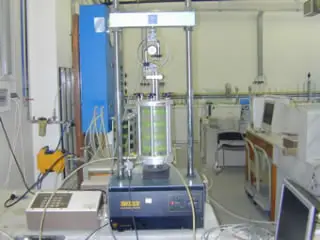The triaxial test has the following merits and demerits:
Merits of Triaxial Test
- Triaxial test has complete control over the drainage conditions. Tests can be easily conducted for all three types of drainage conditions.
- Pore pressure and volumetric changes are possible to be measured directly.
- Stress distribution is uniform on the failure plane.
- Another advantages is that the specimen will fail on its weakest plane.
- The state of stress at all intermediate stages upto failure is known. It is possible to draw the mohr circle at any shear stage.
- The test is suitable for accurate research work. The apparatus is adaptable to special requirements such as extension test and tests for different stress paths.

Demerits of Triaxial Test
- Triaxial apparatus is expensive.
- In the direct shear test, the drained test takes shorter period.
- It is impossible to calculate cross sectional area of the specimen accurately at large strains, as the assumption that the specimen remains cylindrical does not hold good.
- The test simulates only axis-symmetrical problems. In the field, the problem is generally 3-dimentional. A general test in which all the three stresses are varied would be more useful.
- Specimen consolidation in the triaxial test is isotropic; whereas in the field, the consolidation is generally anisotropic.
Despite the above mentioned demerits, triaxial test is extremely useful. It is the only reliable test for accurate determination of the shear characteristics of all types of soils and under all the drainage conditions.
